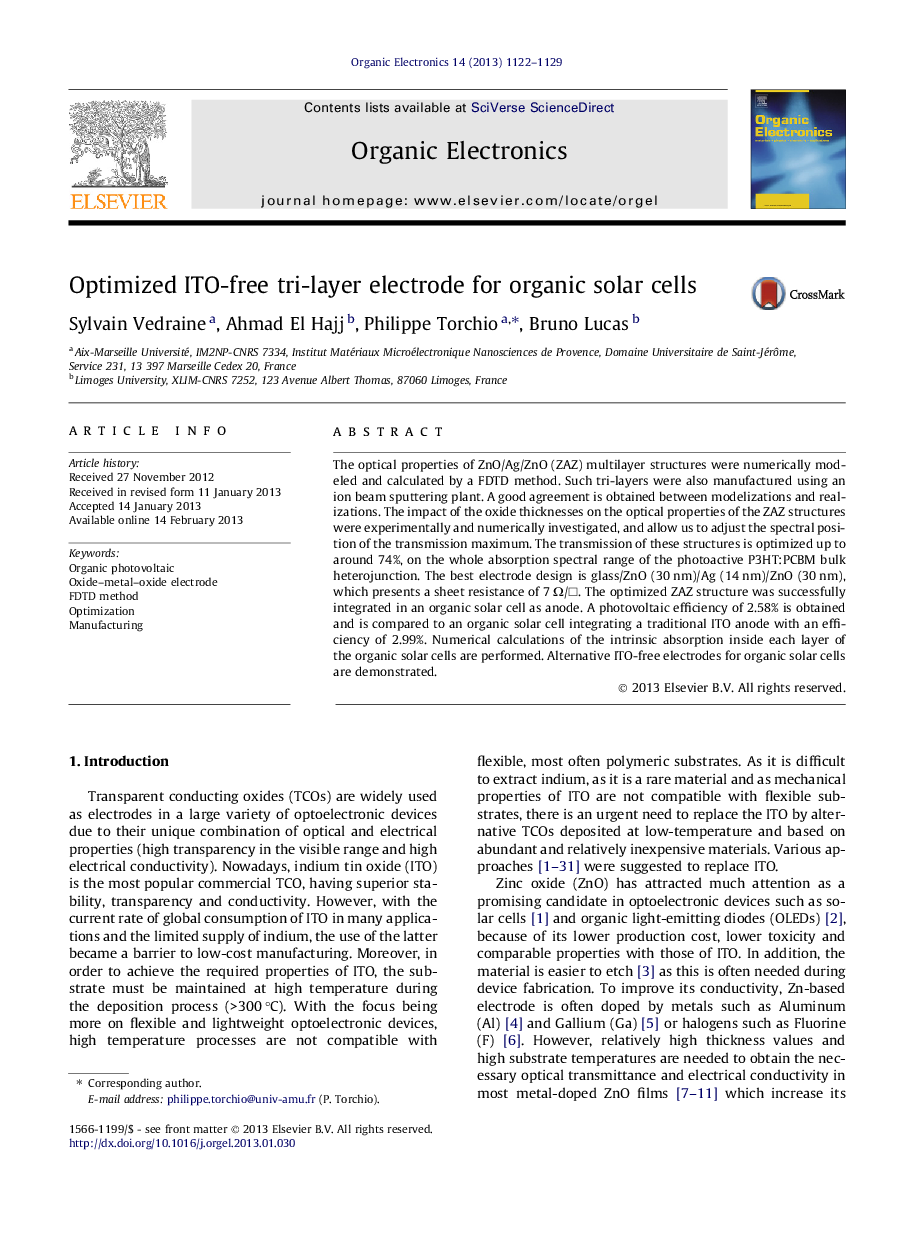| Article ID | Journal | Published Year | Pages | File Type |
|---|---|---|---|---|
| 1263909 | Organic Electronics | 2013 | 8 Pages |
The optical properties of ZnO/Ag/ZnO (ZAZ) multilayer structures were numerically modeled and calculated by a FDTD method. Such tri-layers were also manufactured using an ion beam sputtering plant. A good agreement is obtained between modelizations and realizations. The impact of the oxide thicknesses on the optical properties of the ZAZ structures were experimentally and numerically investigated, and allow us to adjust the spectral position of the transmission maximum. The transmission of these structures is optimized up to around 74%, on the whole absorption spectral range of the photoactive P3HT:PCBM bulk heterojunction. The best electrode design is glass/ZnO (30 nm)/Ag (14 nm)/ZnO (30 nm), which presents a sheet resistance of 7 Ω/□. The optimized ZAZ structure was successfully integrated in an organic solar cell as anode. A photovoltaic efficiency of 2.58% is obtained and is compared to an organic solar cell integrating a traditional ITO anode with an efficiency of 2.99%. Numerical calculations of the intrinsic absorption inside each layer of the organic solar cells are performed. Alternative ITO-free electrodes for organic solar cells are demonstrated.
Graphical abstractFigure optionsDownload full-size imageDownload as PowerPoint slideHighlights► ZnO/Ag/ZnO (ZAZ) structures were fabricated and present similar optical behavior as those modeled by FDTD method. ► The thicknesses of the oxide layers allow setting the spectral position of the transmission maximum. ► The optimized electrode is glass/ZnO (30 nm)/Ag (14 nm)/ZnO (30 nm). ► The optimized ZAZ electrode is integrated in a P3HT:PCBM based organic solar cell. ► The measured efficiency of an organic solar cell with a ZAZ electrode approaches that of a cell with a traditional ITO electrode.
